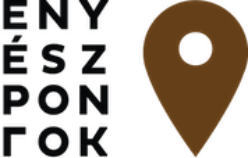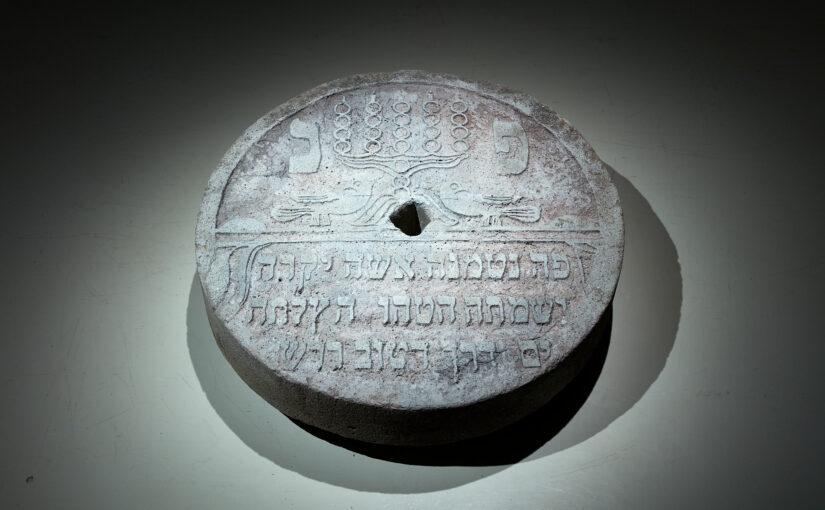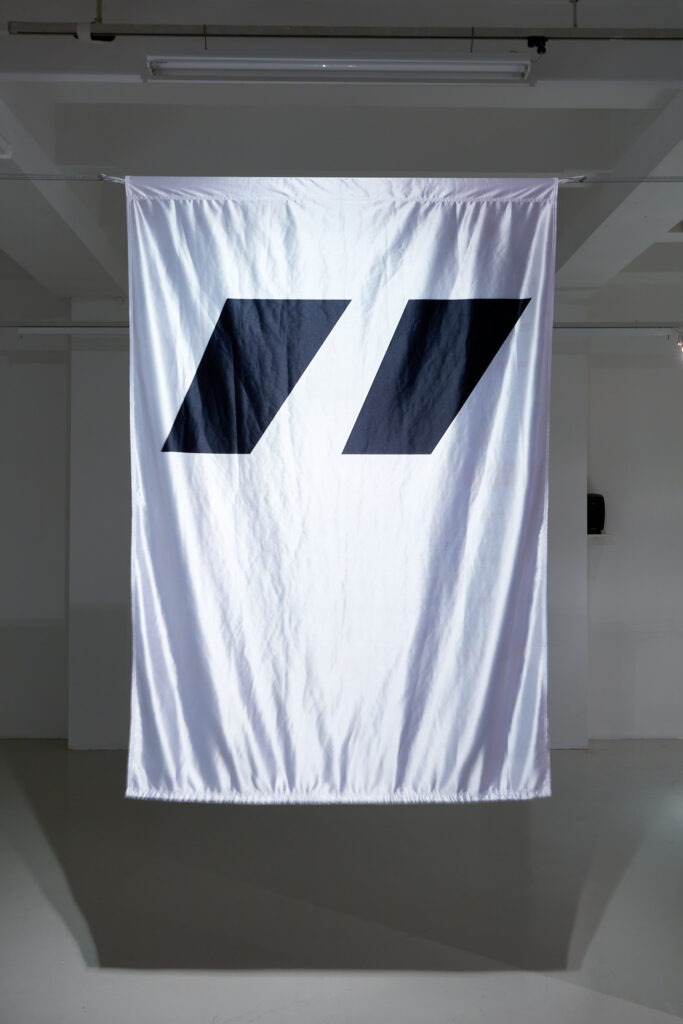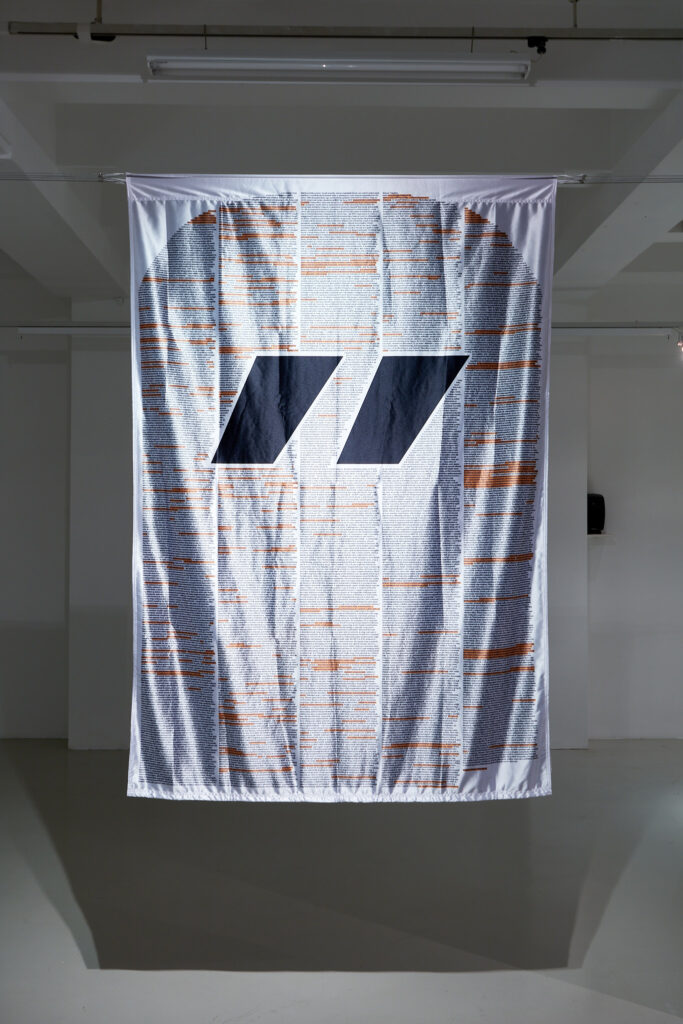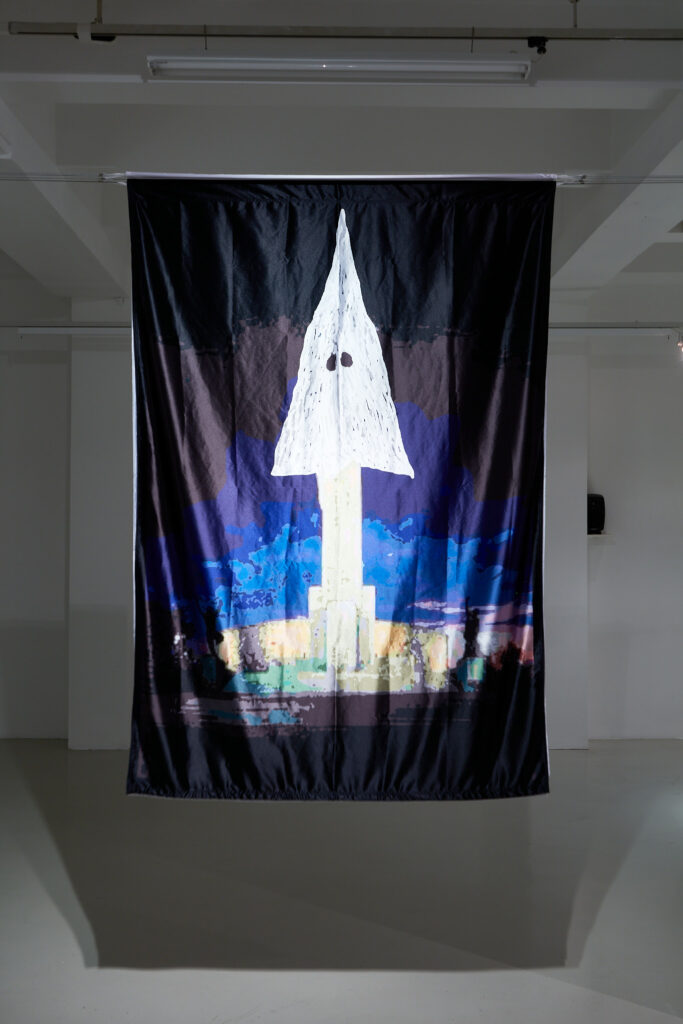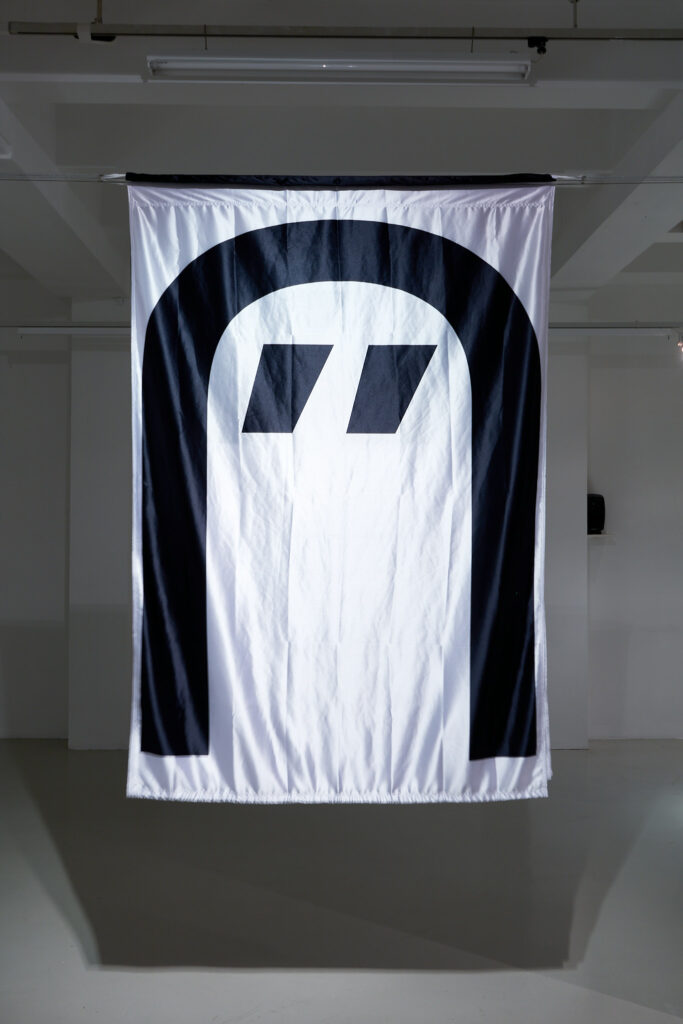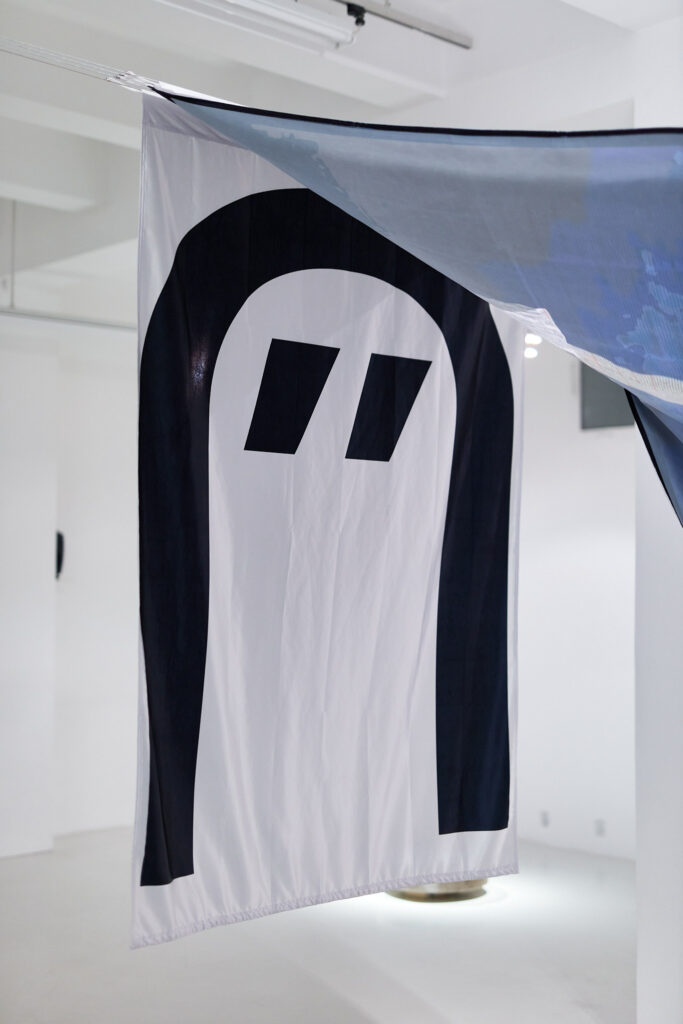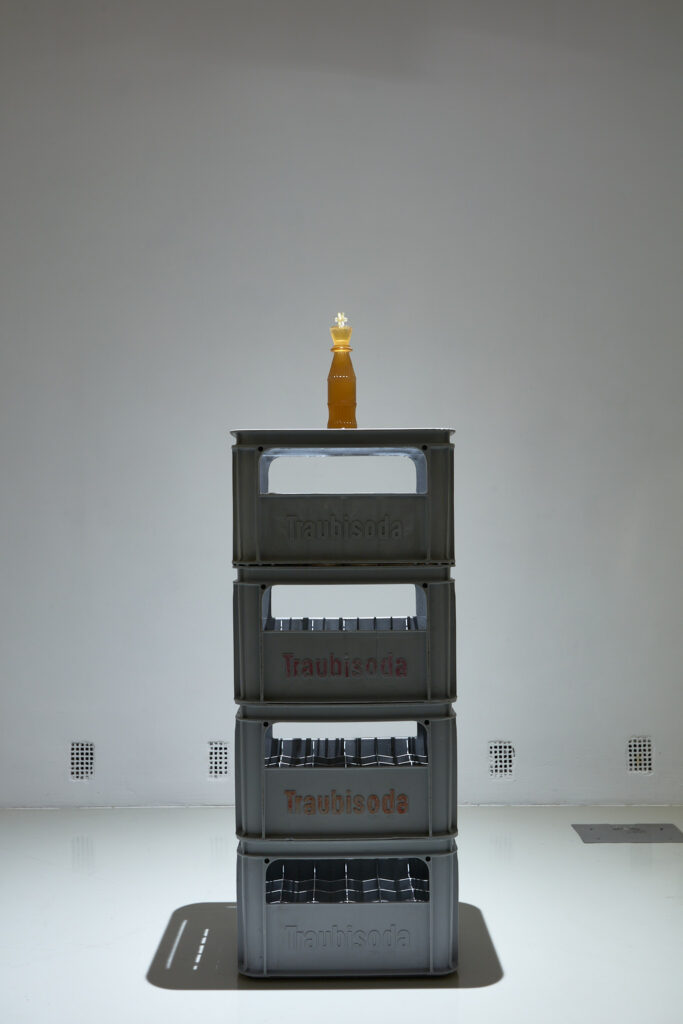installáció, kétcsatornás hang, kő, 56 cm, 2021
/ Installation, two-channel sound, stone, 2021

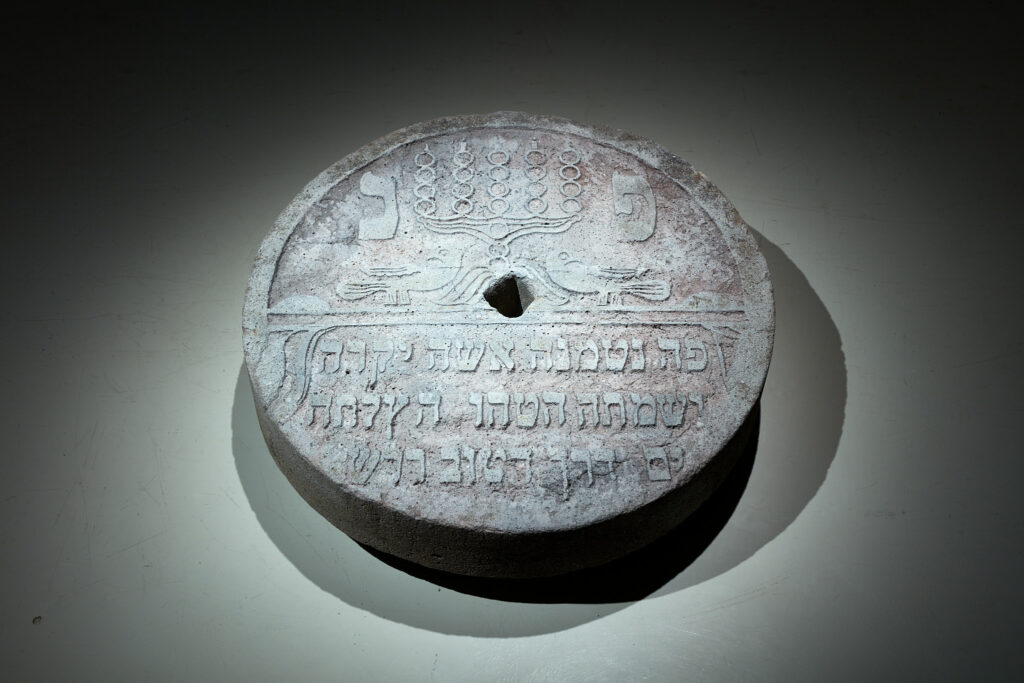

KissPál Szabolcs műve a rendszerváltást követő, korai kilencvenes évek Magyarországának két olyan történetét hozza párhuzamba, amelyek időben és térben teljes átfedésben, párhuzamosan bontakoztak ki, ugyanakkor egyáltalán nem, vagy csak nagyon kis mértékben keresztezték egymást.
„Mindkét történet helyszíne a délkelet-magyarországi Szarvas, ahol 1990-ben a sátoraljaújhelyi származású Ronald S. Lauder amerikai üzletember, műgyűjtő és politikai aktivista kezdeményezésére zsidó gyerekek nyaraltatása céljából egy,a rendszerváltás utáni években zsidó reneszánsznak is nevezett intézményes fellendülés egyik meghatározó példájának tekinthető nemzetközi tábor létesült.
A másik történet a Nagy-Magyarország – Történelmi Országközép Emlékműhöz kapcsolódik, aminek története bár a tizenkilencedik század végén indult, 1990-ben, a nemzeti radikalizmus szintén ekkor zajló reneszánszakor nyerte el mai jelentőségét.
A két létesítmény légvonalban másfél kilométerre található egymástól.
A JDC-Lauder International Jewish Youth Camp változatos korcsoportba tartozó gyerekeket, fiatalokat nyaraltat turnusonként több száz nemzetközi résztvevővel. Fennállásának 30 éve alatt tízezres nagyságrendben nyaraltak itt táborozók, akikben a szervezők elsősorban „a zsidó közösség iránti elkötelezettséget és a zsidó hagyományok továbbadásának fontosságát” igyekeztek erősíteni speciális, játékos pedagógiai módszerekkel. A tábor célja egy olyan közösség létrehozása, ”amely táplálja és erősíti a szórakoztató oktatáson alapuló egyéni és közösségi fejlődést” fiatalok ezreinek nyújtva ezzel saját identitásukat meghatározó élményt.
A Szarvasi Történelmi Országközép földrajzi koordinátáit egy helyi földrajz-történelem szakos tanár, Mihálfi József határozta és jelölte meg az akkor már nem működő szarvasi Kreszán-malom területén található malomkővel az 1880-as években. A malomkövet az 1919-20 között ott állomásozó román csapatok állítólag ismeretlen helyre vittek. A földrajzi pont helyére 1939-ben egy emlékmű, egy kisméretű négyvitorlás 6,5 m magas szélmalom-modell épült Gödrös István községi mérnök tervei alapján, amely a későbbiekben megsemmisült, majd 1990-ben újraépült. Az emlékmű és a hozzá vezető, 2000-ben kialakított Történelmi Emlékút azóta is a többé, vagy kevésbé radikális nemzeti identitás kifejezésének színhelye.”
KissPál Szabolcs a kutatásai során rátalált Łukasz Baksik lengyel fotós néhány művére, amelyek héber feliratos malomköveket ábrázoltak. A háború után a közép-kelet európai térség több településén tendenciává vált, hogy a különböző okok miatt lebontott zsidó temetők értékes sírköveit újrahasznosítják. Ezek a tárgyak tökéletesen magukba foglalják a rendszerváltás idején Szarvason párhuzamosan kibontakozó két történetet. A kő két oldalán lévő hangszórókból interjúk hangzanak el, amelyek egyfelől a korszakban a Szarvasi Nemzetközi Zsidó Ifjúsági Táborban nyaralókkal készültek (Paszternák András, Schönberger Ádám, Vadász Éva), másfelől pedig egy helytörténésszel (Szenes János), aki egyben az Országközép emlékművet is magába foglaló Szarvasi Történelmi Emlékút alapítvány elnöke.
Közreműködők: Paszternák András, Szenes János, Schönberger Ádám, Vadász Éva
Köszönet: Ábrahám Vera, Balogh István, Łukasz Baksik, Bányai Viktória, Félix Anikó, Lipták Mihály, Mircea Cernov, Kékesi Zoltán, Koller Margit, Natalia Romik, Toronyi Zsuzsa, Tóth Tamás
/ A hangjátékot a fenti linken lehet elérni
“The work brings together two stories of Hungary in the early 1990s, after the fall of the regime, that unfolded in time and space in parallel and complete overlap while at the same time not intersecting at all, or only to a very small extent.
Both stories take place in the town of Szarvas in southeastern Hungary, where, in 1990, at the initiative of American businessman, art collector, and political activist Ronald S. Lauder (whose family roots lie in the city of Sátoraljaújhely), an international summer camp was established for Jewish children, a camp which could be considered a defining example of the institutional revival that, in the years following the fall of socialism, was referred to as the Jewish Renaissance.
The other story concerns the Greater Hungary – Historical National Center Monument, the history of which, though it began in the late nineteenth century, came to acquire its present significance in 1990, when a sort of renaissance of national radicalism swept through the country.
The two installations are 1.5 kilometers apart as the crow flies.
The JDC Lauder International Youth Camp is a summer camp for children and young people of all ages. It welcomes hundreds of participants from all over the world every year. Over the course of the 30 years since it was founded, tens of thousands of young people have attended the camp, where the organizers have sought to foster “a commitment to the Jewish community and a sense of the importance of passing on Jewish traditions.” Using special, playful pedagogical methods, they have striven to create a community “that nurtures and strengthens individual and communal development based on enjoyable education,” offering thousands of young people an experience which will help them shape their sense of identity.
The precise geographical site of the Szarvas Historical National Center was determined by a local geography and history teacher named József Mihálfi in the 1880s. Mihálfi used a millstone to mark the site near a then defunct mill in Szarvas (Kreszán). The stone was allegedly moved to an unknown location by Romanian troops who were stationed in the area in 1919–20. A monument—a small model of a windmill 6.5 meters tall with four blades—was built on the site in 1939. It was based on the designs of István Gödrös, a municipal engineer. The model was later destroyed and was then rebuilt in 1990. The monument and the Historical Memorial Trail leading to it, built in 2000, have since been a site for the expression of a more or less radical attachment to national identity.”
Contributors: András Paszternák, János Szenes, Ádám Schönberger, and Éva Vadász
With special thanks to: Ábrahám Vera, István Balogh, Łukasz Baksik, Viktória Bányai, Anikó Félix, Mircea Cernov, Zoltán Kékesi, Koller Margit, Mihály Lipták, Natalia Romik, Zsuzsa Toronyi, and Tamás Tóth.
